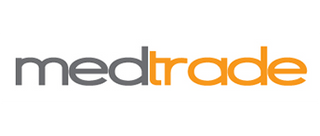Screening through Pulse Oximetry
Researchers today are trying to answer if overnight pulse oximetry is effective in assessing the need for oxygen therapy on a long term basis as compared to arterial blood gas for patients who are suffering from Chronic Obstructive Pulmonary Disease. They are also trying to find out if monitoring oxygen saturation using a pulse oximeter with asthma patients is an objective measure to determine the acute severity of the disease as compared to peak expiratory flow rate. Furthermore, it is also being determined if pulse oximetry is accurate enough to stratify that patients require to be admitted in the hospital or if they rely on signs and symptoms alone, especially for patients suffering with community acquired pneumonia,
It is noteworthy that overnight pulse oximetry can be used for so many purposes and various screening. It provides a non-invasive technology as compared to Arterial Blood Gas, which is a gold standard screening procedure for saturation of oxygen with blood but is very painful, invasive, and time consuming. It also has a significant cost attached to it. Pulse oximetry, on the other hand, works on a simple technology that is easy to administer and interpret. It also gives the advantage of cost saving and portability.
This simple device can detect any changes in the oxygen saturation of hemoglobin in arterial blood. When used correctly and on time, it can give an indication of any possible problems, such as hypoxia, that can later on lead to life-threatening situations. It is commonly used in medical care, particularly in taking care of critically ill patients, in anesthesiology, and when attending to people in emergency departments. Over the years, the technology has been improved, advanced, and made more user-friendly. The simplicity of the device has increased the potential of its usage in a variety of clinical settings.
It requires a probe to be attached to the finger that will measure how much infrared light is being absorbed by the oxygenated and deoxygenated blood in the capillaries (tiny veins). It has a display unit that indicates how much of the hemoglobin is saturated with oxygen. It also indicates the pulse rate or heartbeat through audible technology. Some pulse oximeter models also give a graphical display of the blood flow.
The chances of error are very low, as low as only 2%. Oxygen saturation in hemoglobin is indicated by SpO2, as a percentage. The normal level is considered to be anything above 95%. A 92% SpO2 is considered to be a condition of hypoxemia. It needs to be attended to immediately and should be brought under control. Otherwise, it may lead to life threatening consequences.
It is noteworthy that overnight pulse oximetry can be used for so many purposes and various screening. It provides a non-invasive technology as compared to Arterial Blood Gas, which is a gold standard screening procedure for saturation of oxygen with blood but is very painful, invasive, and time consuming. It also has a significant cost attached to it. Pulse oximetry, on the other hand, works on a simple technology that is easy to administer and interpret. It also gives the advantage of cost saving and portability.
This simple device can detect any changes in the oxygen saturation of hemoglobin in arterial blood. When used correctly and on time, it can give an indication of any possible problems, such as hypoxia, that can later on lead to life-threatening situations. It is commonly used in medical care, particularly in taking care of critically ill patients, in anesthesiology, and when attending to people in emergency departments. Over the years, the technology has been improved, advanced, and made more user-friendly. The simplicity of the device has increased the potential of its usage in a variety of clinical settings.
It requires a probe to be attached to the finger that will measure how much infrared light is being absorbed by the oxygenated and deoxygenated blood in the capillaries (tiny veins). It has a display unit that indicates how much of the hemoglobin is saturated with oxygen. It also indicates the pulse rate or heartbeat through audible technology. Some pulse oximeter models also give a graphical display of the blood flow.
The chances of error are very low, as low as only 2%. Oxygen saturation in hemoglobin is indicated by SpO2, as a percentage. The normal level is considered to be anything above 95%. A 92% SpO2 is considered to be a condition of hypoxemia. It needs to be attended to immediately and should be brought under control. Otherwise, it may lead to life threatening consequences.




